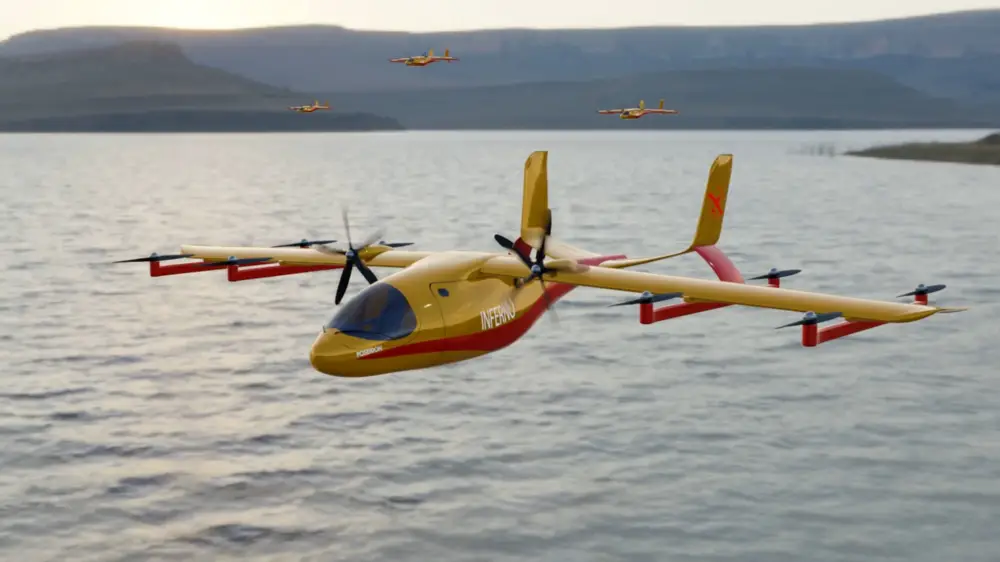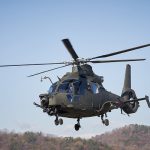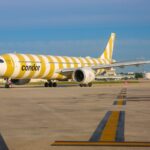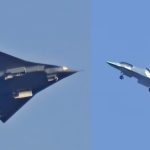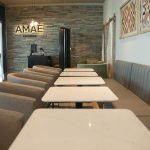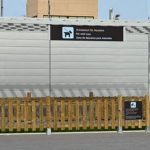Students from the University of Stuttgart’s Aerospace Engineering department have developed a hybrid aircraft concept for aerial firefighting that won the first place in the DLR Design Challenge 2022. The premise of the initiative was to design aerial vehicles for systemic forest firefighting.
The concept, named as «Inferno», was chosen by the jury of the German Aerospace Centre (DLR), the organiser of the annual event. This year, and due to the growing incidence of forest fires in the most vulnerable areas (there were a large number of outbreaks in Europe this summer, especially in the south of the continent), the activity sought to «take up this issue, which requires a holistic approach».
The institution stressed that a systemic design, with optimal interaction of a fleet of firefighting aircraft, both with each other and with units on the ground, should maximise the amount of water transported to the area of the event every 24 hours. With that premise, six student teams presented their designs at the competition’s final symposium earlier this month.
In many cases, forest fires are fought from the air with firefighting aircraft or helicopters. Each has relative advantages and disadvantages depending on different weather conditions, topography or the type and size of the flames.
The team of students from the University of Stuttgart that submitted the winning design developed a hybrid concept that combines the advantages of both types of aircraft.

Speed and flexibility, combined
Fire-fighting aircraft are refuelled on airfields or in large natural water sources. However, the horizontal flight condition means that they need certain minimum distances to operate, which limits refuelling possibilities.
In contrast, helicopters can ascend and descend vertically, and can therefore use smaller natural sources of water or even artificial spaces. However, this flexibility is at odds with their slower speed and higher energy consumption when transporting water to the site of the fire.
The students designed an electric vertical take-off and landing (eVTOL) aircraft that combines two propellers for horizontal displacement and eight propellers for vertical displacement, used by this type of aerial vehicle during the take-off and landing phases.
The Inferno has a hybrid-electric propulsion system comprising electric-powered engines, a battery and a gas turbine. «This significantly reduces fuel consumption and provides more time for firefighting», the students emphasised.
Teamwork
The project also envisages the use of four to six additional identical aircraft during a firefighting operation. Each of them can offer different configurations for transporting people and cargo, securing supplies or supporting the evacuation of individuals in danger. «This allows the aircraft to be used all year round, even outside the wildfire season», said the students.
The winning team will be able to present their design to international aeronautical researchers at the ICAS (International Council of the Aeronautical Science) conference in Stockholm and at the German Aerospace Congress (DLRK) in Dresden, next September.
See also: Department of Defense bets on Joby eVTOL

